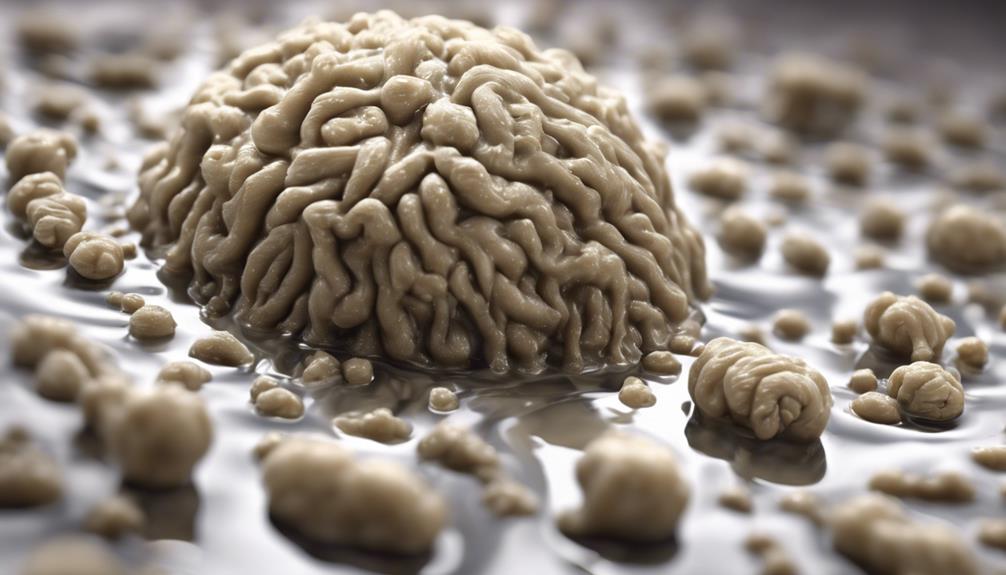As we navigate the world of newborn puppy care, we can liken monitoring their poop to a compass guiding us through uncharted territory.
Imagine this: like a map indicating different paths, puppy poop provides valuable insights into their health.
But what exactly should we be looking for in those tiny bundles of joy?
Let's unravel the mystery behind what newborn puppy poop should look like, shedding light on a fundamental aspect of puppy parenthood that holds clues to their well-being.
Key Takeaways
- Light brown or dark yellow hues are typical, indicating healthy digestion.
- Soft, well-formed consistency ensures easy passing and proper digestion.
- Mucus or greasy coating may signal inflammation or digestive issues.
- Monitoring frequency and content is crucial for early health assessment.
Normal Color of Newborn Puppy Poop
When observing the normal color of newborn puppy poop, light brown or dark yellow hues are typically expected. The color may vary slightly depending on the puppy's diet and health.
In the case of yellow stool, this can often be attributed to the consumption of colostrum, which is rich in nutrients and antibodies essential for the puppy's early development. Additionally, bile produced by the liver plays a role in giving the poop its yellow tint.
Monitoring the color of a puppy's poop is a critical aspect of evaluating their digestive health. Changes in color can indicate issues such as infections, dietary intolerances, or other underlying health concerns.
Expected Consistency of Puppy Poop

To assess the health of a newborn puppy, it is essential to examine the expected consistency of their poop. Newborn puppies have delicate digestive systems, making the consistency of their stool a critical aspect to monitor. Healthy puppy poop should have a soft consistency, making it easy for the puppy to pass without any issues. The ideal poop consistency is well-formed, not too hard or too loose, indicating that the digestive system is functioning well. If the poop is too watery, it could suggest an issue with digestion, while poop that is too firm may indicate constipation or other health problems.
| Expected Consistency of Puppy Poop | Description |
|---|---|
| Soft Consistency | Easy to pass |
| Well-Formed | Not too hard or too loose |
| Not Watery | Indicates proper digestion |
| Not Too Firm | Avoids constipation issues |
Monitoring the consistency of the stool is a simple yet effective way to ensure the health and well-being of newborn puppies.
Healthy Content in Puppy Poop
Healthy puppy poop typically contains a well-formed, firm, and segmented appearance, reflecting a balanced digestive system. When examining your furry friend's stool, look for stools that are orange or brown in color with a soft consistency. The absence of undigested food particles indicates a well-functioning digestive system in newborn puppies. It's also a significant sign if the poop lacks mucus or a greasy appearance.
Monitoring the quantity and frequency of your pup's poop is important as it can provide valuable insights into their overall health. Remember, changes in the appearance or frequency of puppy poop can signal potential health issues. By staying vigilant and taking the right steps to observe and understand your puppy's digestive system, you can make sure your little companion is on the path to good health.
Understanding Coating on Puppy Poop

Examining the coating on a puppy's poop can offer valuable insights into their digestive health and potential underlying issues.
Mucus present on the poop may indicate inflammation or the presence of parasites in the digestive system.
If you notice a greasy appearance on the puppy's poop, it could be a sign of excess fat or underlying health concerns. Liver problems and pancreatitis are conditions that might cause alterations in the coating of puppy poop.
Additionally, exocrine pancreatic insufficiency (EPI) in young dogs can lead to chronic diarrhea and affect the poop's coating.
It's important to pay attention to these details as the coating can reveal a lot about your puppy's well-being. Monitoring the coating on the poop regularly can provide early indications of digestive issues, helping you address them promptly.
Monitoring Frequency of Puppy Poop
When observing a newborn puppy's poop, one vital aspect to pay attention to is the frequency at which they defecate. Monitoring how often your puppy poops is essential for their digestive health and overall well-being.
Here are some key points to think about when tracking the frequency of puppy poop:
- Newborn puppies poop several times a day, usually after meals and upon waking up.
- Puppies typically start pooping about 30 minutes after eating until they're around 4 months old.
- Any changes in the frequency of puppy poop should be noted as they can indicate potential health issues.
- Regularly tracking the frequency of puppy poop can help identify abnormalities early on, prompting timely veterinary attention.
- Consistency in monitoring your puppy's poop frequency is crucial for maintaining their health and well-being.
Frequently Asked Questions
What Does Unhealthy Puppy Poop Look Like?
Unhealthy puppy poop can be runny, oddly colored, mucus-filled, or smelly. We must watch for signs of diarrhea, constipation, or unusual bowel movements as they could indicate health issues in newborn puppies.
What Should a Bottle Fed Puppies Poop Look Like?
Our bottle-fed puppies' poop should be well-formed, soft, and light brown or dark yellow. It reflects their digestion and nutrient absorption. We monitor color and texture for proper nutrition. Healthy poop is not too hard or runny.
How Do I Know if My Puppy's Poop Is Normal?
We can tell if our puppy's poop is normal by checking its color and consistency. Healthy poop should be light brown or dark yellow, well-formed, and soft. Monitoring these aspects regularly helps us assess our puppy's health.
How Do You Know if a Newborn Puppy Is Constipated?
If newborn puppies exhibit reluctance to eat, drink, or strain with a hard, enlarged abdomen, they may be constipated. Watch for moaning, groaning, and discomfort. Abnormal bowel movements can signal constipation, requiring prompt attention.
Conclusion
Just like the changing colors of a beautiful sunset, monitoring your newborn puppy's poop can provide valuable insights into their health and well-being.
By paying attention to the color, consistency, and frequency of their stool, you can secure they're thriving and catch any potential issues early on.
Remember, a healthy puppy poop is like a shining beacon of good digestive health, guiding you towards a happy and vibrant future together.










